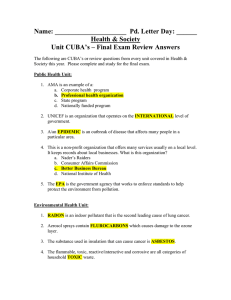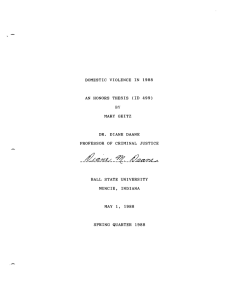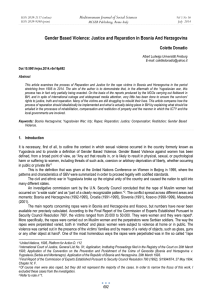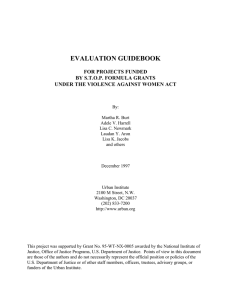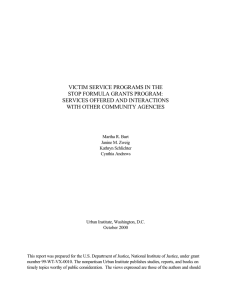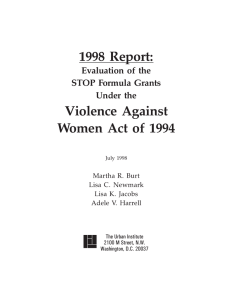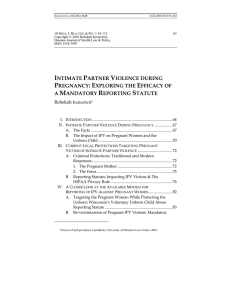Framing the Victim
advertisement
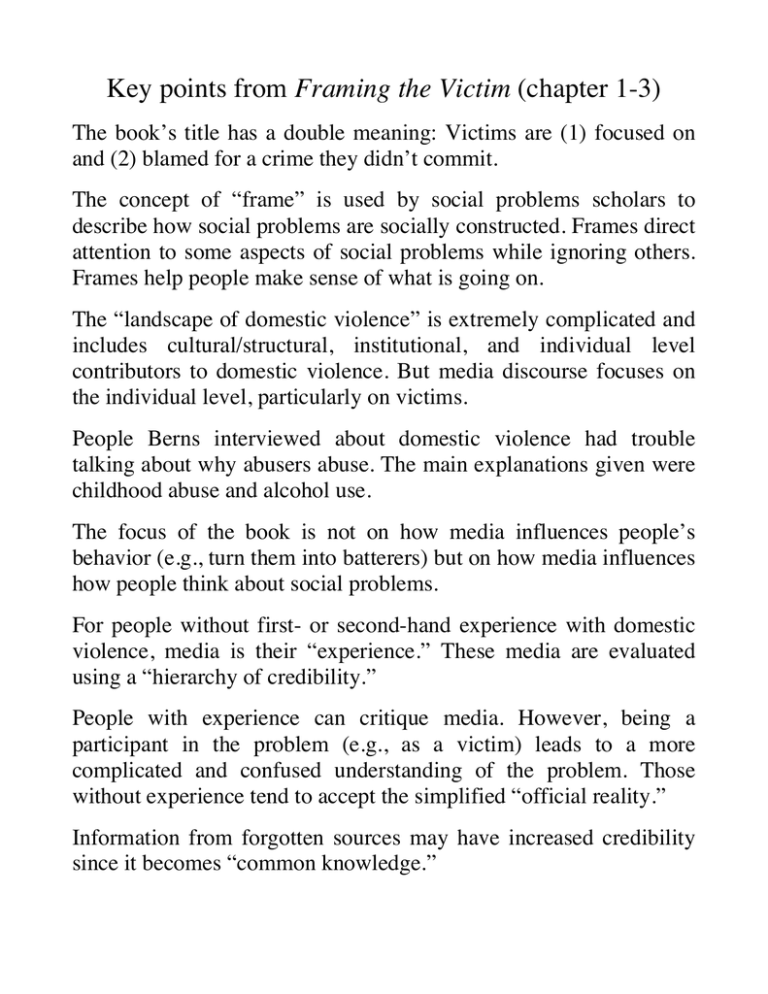
Key points from Framing the Victim (chapter 1-3) The book’s title has a double meaning: Victims are (1) focused on and (2) blamed for a crime they didn’t commit. The concept of “frame” is used by social problems scholars to describe how social problems are socially constructed. Frames direct attention to some aspects of social problems while ignoring others. Frames help people make sense of what is going on. The “landscape of domestic violence” is extremely complicated and includes cultural/structural, institutional, and individual level contributors to domestic violence. But media discourse focuses on the individual level, particularly on victims. People Berns interviewed about domestic violence had trouble talking about why abusers abuse. The main explanations given were childhood abuse and alcohol use. The focus of the book is not on how media influences people’s behavior (e.g., turn them into batterers) but on how media influences how people think about social problems. For people without first- or second-hand experience with domestic violence, media is their “experience.” These media are evaluated using a “hierarchy of credibility.” People with experience can critique media. However, being a participant in the problem (e.g., as a victim) leads to a more complicated and confused understanding of the problem. Those without experience tend to accept the simplified “official reality.” Information from forgotten sources may have increased credibility since it becomes “common knowledge.” Key points from Framing the Victim (chapter 4-6) Women’s magazine articles about domestic violence overwhelming use the individual frame of responsibility (as opposed to institutional, cultural/structural or integrational frames). These articles, which place responsibility for domestic violence on the individual level, are more likely to focus on the victim, rather than the couple or the abuser. These articles use a “victim empowerment perspective,” which has five common themes: (1) how victims should solve their own problems, (2) how “potential victims” should prevent abuse, (3) battered women who kill their abusers, (4) how family/friends can help victims, and (5) “life after abuse” stories. The editorial guidelines of women’s magazines contribute to the dominance of the victim empowerment perspective. These magazines publish articles that: (1) provide a service to readers, (2) empower readers, (3) keep it personal, and (4) have uplifting, positive resolutions. Victims who can’t be empowered, like children and the elderly, or unsympathetic victims, like drug users, poor women, or ugly/fat women, aren’t covered. Abusers aren’t covered. This perspective mirrors shifts in media coverage from informational to emotional and from learning from experts to using them to promote a pre-determined conclusion. Men’s and conservative political magazines use an “antifeminist frame.” Articles in these magazines tend not to be about the problem of domestic violence itself. Instead they focus on how the battered women movement has misframed the problem. This is done by: (1) reframing the problem as “human violence,” (2) challenging the innocence of female victims, (3) critiquing tolerance for women’s violence, (4) claiming men are discriminated against in the criminal justice system, and (5) blaming feminist advocates. These strategies degender the problem but gender the blame.




